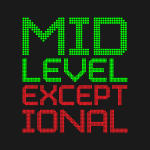CBA Roundtable: NBA Jersey Advertising
Welcome to another CBA Roundtable! New commissioner Adam Silver has spoken openly about the “inevitable” development of NBA teams using jersey advertising and estimated their worth at $100 million.
What do you think about the possibility of NBA players and teams putting corporate logos on their in-game uniforms?
Mark Evans (@JRMarkyMark):
I’m totally fine with it.
Sure, I would like for the jerseys to stay “clean” without advertisements but the NBA is such a huge business that jumping on this opportunity is inevitable. It could be a solid stream of revenue for the league and it is not like people will stop buying and wearing jerseys because of some advertisements.
I am waiting for a marquee player to complain about this. NBA players have it pretty good, even by the standard of professional athletes. The average NBA player makes more money and lasts longer than the average NFL player.
If players somehow want to be paid more while doing things like shortening the season, they can’t then complain about something like this. You cannot have your cake and eat it too; if you want to be paid the same or more money for playing less games, you have to concede on things like this to make up for lost revenue.
Summary of my rant: there are bigger issues surrounding the NBA, and this is just fine.
Ryan Weisert (@Spectavius):
I think we are taking a short-sighted view of this idea. This is not just a question of added revenue and inevitability but a question of American sports identity.
America’s Big 4 sports leagues stand out from their international brethren in that their jerseys do not currently display sponsor’s logos. Though owners like Jerry Jones have monetized nearly everything about their teams and the games they play, jerseys have remained sponsor-free for decades. In Europe, the chest of every football kit is slathered with the brand name of some global company. There’s no reason to begrudge those clubs or their sponsors for that. It is great exposure for the brands to be seen across the chest of some of the most recognizable figures in the world. Likewise, it is a great way for the clubs to generate revenue, both from the sponsorship itself and from constantly changing their kit to encourage fans to buy new ones year after year. But sponsor logos on NBA jerseys is a massively different scenario.
First off, European clubs have no cost controls for wages. They literally have to squeeze every dollar they can out of their team to be able to afford the exorbitant transfer fees and weekly payrolls that some of the largest clubs shell out. That is not the case in the NBA because players are locked into 51% of BRI so player cost is essentially fixed when compared to the violent variation European clubs see in their player expenses. Additionally, NBA teams are soon to be extra flush with cash thanks to the latest TV deal. Put simply, the teams don’t need the money from jersey sponsorship, especially when you consider the next point.
The NBA is a star league. Players play the game without helmets or hats so they are substantially more recognizable than their counterparts in the MLB, NHL and NFL. Plus there are only 450 players, meaning the concentration of star power is significantly higher than leagues with larger rosters and more players sharing the court or field. What I am getting at here is that NBA players and the jerseys they wear are the most valuable real estate in global sports. Why sell that so cheaply?
If sponsor logos are inevitable, it makes no sense for the NBA to be the first mover in American sports. Let sponsors buy NFL, MLB and NHL jerseys first and drive the prices up so that the NBA can earn the premium price it deserves.
Leo Sepkowitz (@LeoSepkowitz):
The inevitable placement of ads on jerseys has made me focus on the move’s potential positives.
I can only think of one and a half.
First the half: As we will see with the new TV deal, more money for the Association means a higher salary cap and a higher salary cap of course means more dough going to the players. In the short-term, any spike in revenue will result in more ridiculous contracts that people like us get to gleefully pick apart. Not a bad reward but still not a fair tradeoff.
The bigger one: In the long-term, something more meaningful might develop from a higher salary cap: the end of the max contract.
Like many others, I would love to see the max deal abolished so that the bidding for LeBron James, for instance, could feature 4-year, $200 million offers by big-market teams next to 2-year $75 million offers from small-market clubs. Free agency would be so much more interesting.
As the cap increases, the gap between what players make under max contracts and what they could make on a completely open market (limited only by said cap) will grow. That will lead to more anger toward the system, and maybe, hopefully, the end of the max contract.
If the cap someday reaches $100 million, a max deal under the current rules would pay out somewhere between $30-35 million annually. But without the max, there is a chance we could see 4-year, $300 million-type deals for megastars. That’s my idea of fun.
Jersey ad revenue alone probably will not set this all in motion, but if it contributes at all to the end of the max contract, I will learn to live with a Toyota logo on Melo’s jersey.
Artie Novikov (@MyNameIsArtie):
A lot of questions come up when I think of jersey ads – How many ads per jersey? How big will the ad be? Will each team member have the same ads? Or will McDonald’s be able to single out Kevin Durant and throw a big “M” on his back? And many, many more. The more I think about the idea jersey ads and those questions, the more I converge on one answer: I hate it.
NBA commish Silver says that corporate logos on jerseys are a great way for the NBA and its marketing partners to get “that much closer” to the fans and players. Yeah, maybe, but do the fans really want that? I know I do not really care to be any closer to Kumoho Tires and already own more than my fair share of Nikes.
Silver also said that corporate logos on jerseys could be worth as much as $100 million to the NBA. Mind you, this was before manic valuations spilled over from Wall Street to the NBA. Even if you adjust for the current environment and double that figure to $200 million, only about $102 million ends up flowing to the salary cap – approximately $3.4 million per team. To me, that does not seem worth slapping corporate logos on player jerseys.
From a purely aesthetic standpoint – there is no way I can picture a jersey with logos looking better than the current, clean uniforms. It is an easy way for the league and the owners to squeeze some additional revenue out of their franchise, so I cannot blame the league, the owners and even the players for potentially being okay with the idea.
If I was an owner it is very possible that I would be signing a different tune, but right now the idea of turning team uniforms into billboards seems like nothing short selling out.
Daniel Leroux (@DannyLeroux):
“The name on the front of the jersey is what really matters, not the name on the back” gets so much airplay in American sports that announcers and coaches probably say it in their sleep.
What happens when the name on the front of the jersey includes corporations?
While I understand the desire to squeeze out every potential drop of revenue, basketball jerseys have very little real estate for effective advertisement barring substantial changes. A lapel-style spot would work and/or something on the shorts (as long as we avoid MMA-style ridiculousness) but sleeveless uniforms take away some of the less obtrusive spots for them. We have seen soccer teams all over the world give sponsors the area where team logos go now in the NBA but that would mark a meaningful change for a league that has resisted even minor ads for such a long time. Also, if the league starts using sleeved jerseys more heavily because of advertising revenue I may riot. Player comfort and happiness on the court should always trump additional revenue, particularly when a league already makes a ton of money.
Another problem with sponsorship comes from the additional possibility of brand problems down the line. What happens if a company on a team’s jerseys gets busted in some major scandal like what happened to Donald Sterling or causes a disaster like the Deepwater Horizon oil spill? Leagues and television networks have taken dramatic steps to make sure players are not shown during the ads going in and out of breaks to avoid confusion in terms of endorsement. The complex, changing web of player endorsements makes this a minefield for everyone involved. What happens if McDonald’s endorser LeBron James has to sport a Burger King logo while he plays? The shoe companies could make things even more complicated since adidas makes the jerseys themselves- a giant Nike swoosh would not exactly make them happy.
I sincerely hope the NBA considers these perilous issues and turns down an unnecessary and cheesy opportunity to make even more money.
Thank you so much to the roundtable participants and readers alike. If you would like to continue the conversation, feel free to write a comment, send us an e-mail at midlevelexceptional@gmail.com or reach out on Twitter (@MLExceptional).


